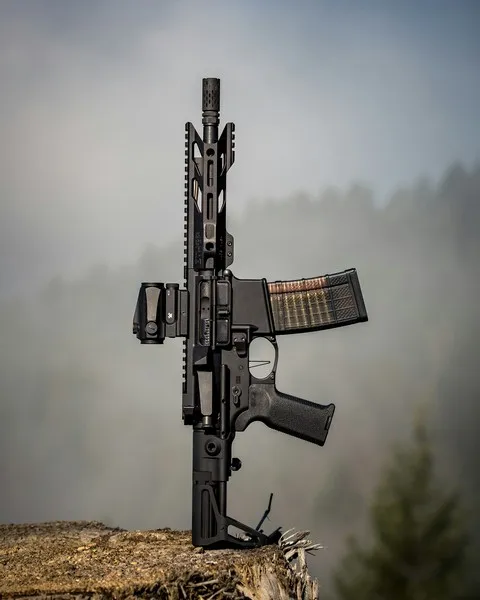Table of Contents
- Origins of the Military-Industrial Complex
- Understanding the Components of the Military-Industrial Complex
- The Sociological Implications of the Military-Industrial Complex
- Why the Military-Industrial Complex Persists
- The Global Dimension of the Military-Industrial Complex
- Conclusion
The concept of the “Military-Industrial Complex” (MIC) refers to the symbiotic relationship between a nation’s military, its government, and private industry, particularly those industries that produce arms, defense technology, and other military equipment. Sociologically, the term highlights the complex interdependencies and potential conflicts of interest that can arise when governmental and corporate entities are both invested in defense-related policies and industries. This concept was famously introduced to the public by U.S. President Dwight D. Eisenhower in his farewell address in 1961, where he warned of the dangers that an entrenched military-industrial partnership might pose to democratic processes and societal priorities.
This article explores the nature, history, and implications of the Military-Industrial Complex through a sociological lens, providing an overview of its development, the factors that perpetuate it, and its impact on society. The MIC is more than an economic or political issue; it is also a structural and cultural phenomenon, deeply embedded in national identity and global power dynamics.
Origins of the Military-Industrial Complex
World War II and the Emergence of the MIC
The roots of the Military-Industrial Complex can be traced back to World War II. During the war, the United States and other industrialized nations saw the need to rapidly mobilize their economies for the production of war materials. Factories previously dedicated to consumer goods began producing aircraft, tanks, ammunition, and other military supplies. This transition required close collaboration between the government and private industry, which brought substantial economic growth to various sectors and regions.
As the war ended, however, the infrastructure and relationships built between the state and private defense contractors did not dissolve. Instead, these entities reoriented themselves toward what would soon become a new era of global tension: the Cold War. The continuous demand for advanced weaponry, aerospace technology, and surveillance equipment became an economic and strategic priority. This period solidified the presence of the MIC as a foundational part of the American—and global—economic and political landscape.
Eisenhower’s Warning
President Eisenhower’s famous warning underscored the concern that an overly robust Military-Industrial Complex could lead to an undemocratic concentration of power. He argued that the relationship between defense contractors, the military, and the government could enable private industry to wield disproportionate influence over national policy, prioritizing profit and power over the public good. This could, in turn, lead to a “permanent arms economy” where the societal focus on militarization detracts from investment in other vital sectors such as education, healthcare, and infrastructure.
Understanding the Components of the Military-Industrial Complex
The Military-Industrial Complex is composed of three major pillars: the military establishment, the government, and private industry. Each plays a crucial role in sustaining the complex and is motivated by distinct but interconnected interests.
The Military Establishment
The military establishment refers to the armed forces and the administrative bodies that oversee national defense. From a sociological perspective, the military serves as a symbol of national power, authority, and protection, but it also acts as an institution with its own needs and desires for growth and resource acquisition. The military requires constant funding for personnel, training, and technology upgrades to maintain a competitive edge. Thus, it benefits from a close relationship with both the government and the private sector, as these connections facilitate access to the resources needed to expand and modernize.
The Government
The government plays a dual role in the Military-Industrial Complex. First, it acts as a policy maker, deciding on military budgets, foreign policy, and defense strategy. Second, it is a consumer, contracting private companies for the production of military equipment and technology. Politically, elected officials often support increased defense spending as a means of job creation and economic stability within their constituencies, particularly in areas where military installations or defense manufacturers are key employers. This relationship is reinforced by lobbying efforts from defense contractors who seek to influence policy in ways that benefit their business interests.
Private Industry
The private industry is the engine of the Military-Industrial Complex, with companies manufacturing everything from firearms and ammunition to high-tech drones and advanced cybersecurity systems. The interests of private industry are primarily economic, focusing on profit maximization and shareholder returns. Contracts with the government provide a reliable revenue stream, leading companies to invest heavily in lobbying efforts and campaign contributions. Sociologically, these companies help shape public discourse around security and defense, often promoting narratives that emphasize the need for military superiority.
The Sociological Implications of the Military-Industrial Complex
The persistence of the Military-Industrial Complex has profound sociological consequences, shaping national priorities, social inequality, and cultural narratives. Understanding these implications reveals the ways in which the MIC influences not only policy but also social attitudes and collective values.
Economic Disparities and Prioritization of Resources
One of the most significant implications of the MIC is the reallocation of national resources away from social welfare and toward defense. Governments often face a zero-sum decision when allocating budgets, and the prioritization of military spending can reduce funding for education, healthcare, and social programs. This phenomenon, often referred to as “guns versus butter,” highlights the trade-offs societies must make between defense and domestic welfare. For economically disadvantaged communities, this can mean fewer public services, limited economic mobility, and heightened social inequalities.
The Culture of Militarism
Get the full article AD FREE. Join now for full access to all premium articles.
View Plans & Subscribe Already a member? Log in.





